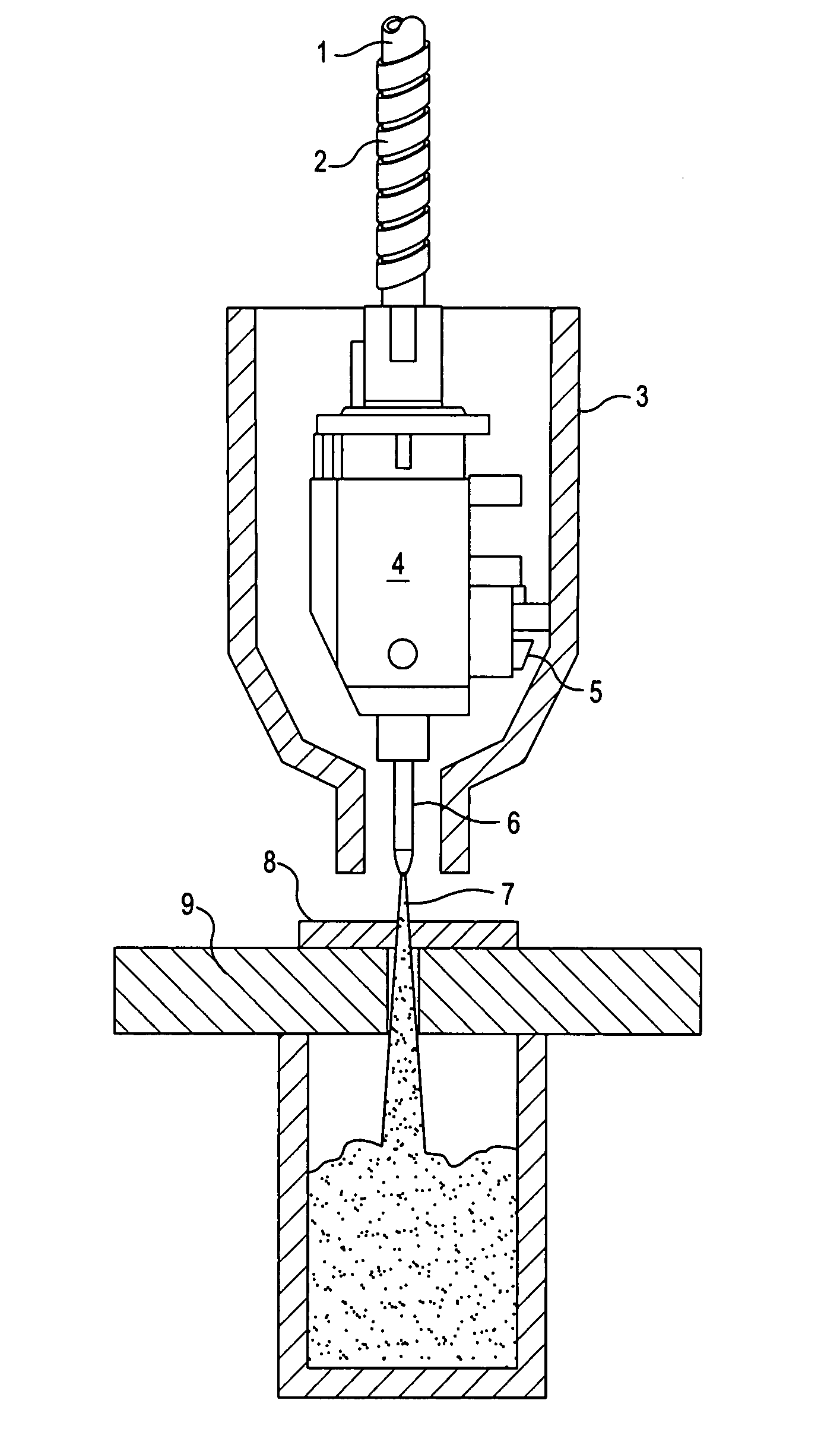Flash vaporizing water jet and piercing with flash vaporization
a technology of flash vaporization and flash vaporization, which is applied in the direction of metal working apparatus, grinding machine components, manufacturing tools, etc., can solve the problems of lag of abrasives' trajectories, limited maximum pressure used in commercial asj systems, and inability to meet the requirements of piercing, etc., to reduce the piercing pressure, and mitigate surface/subsurface damage
- Summary
- Abstract
- Description
- Claims
- Application Information
AI Technical Summary
Benefits of technology
Problems solved by technology
Method used
Image
Examples
Embodiment Construction
[0016]A FAWJ / FASJ may use any of several methods, either applied individually or combined, to superheat the water in the AWJ / ASJ. The temperature of the water must be sufficiently high to cause the water to evaporate or flash soon after the FAWJ / FASJ exits the mixing tube, similar to the LN2 in the ACJ. The optimal locations at which the water of the FAWJ / FASJ flashes depends on the required enhancement for various machining applications.
[0017]In one embodiment, the temperature measured with a thermocouple attached to the nozzle was between 180 to 200 degree C. when the effects of mitigating of piercing damage in many delicate materials were demonstrated at 40 ksi (276 MPa) pressure upstream of the nozzle. The objective is to raise the temperature sufficiently high to reduce the piercing pressure to below the tensile strength of the materials or the binding strength of laminates. In practice, it is desirable to minimize the electrical power required to superheat the water. Tests sug...
PUM
| Property | Measurement | Unit |
|---|---|---|
| pressures | aaaaa | aaaaa |
| pressures | aaaaa | aaaaa |
| pressure | aaaaa | aaaaa |
Abstract
Description
Claims
Application Information
 Login to View More
Login to View More - R&D
- Intellectual Property
- Life Sciences
- Materials
- Tech Scout
- Unparalleled Data Quality
- Higher Quality Content
- 60% Fewer Hallucinations
Browse by: Latest US Patents, China's latest patents, Technical Efficacy Thesaurus, Application Domain, Technology Topic, Popular Technical Reports.
© 2025 PatSnap. All rights reserved.Legal|Privacy policy|Modern Slavery Act Transparency Statement|Sitemap|About US| Contact US: help@patsnap.com



